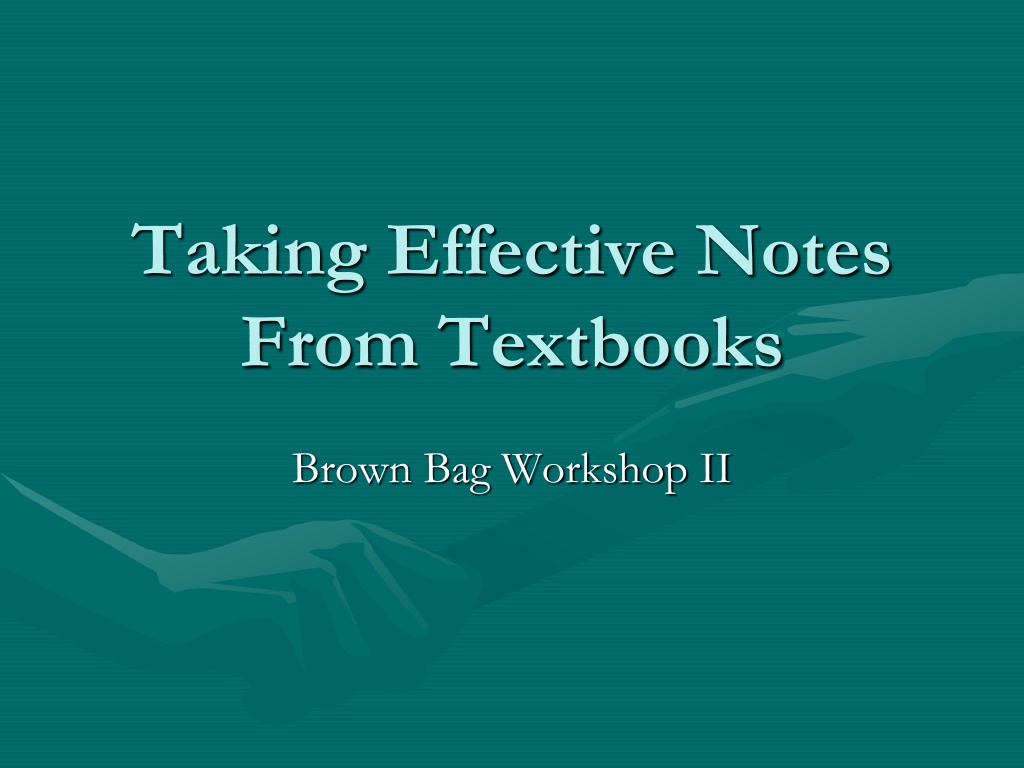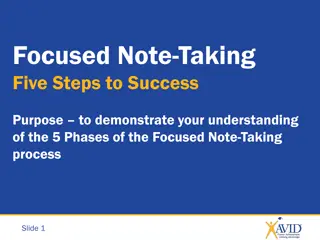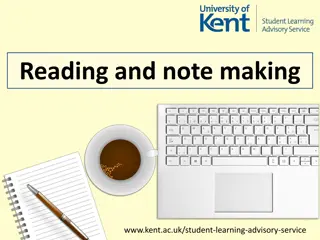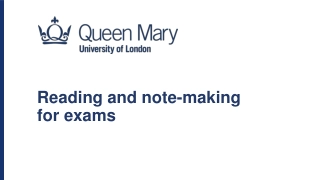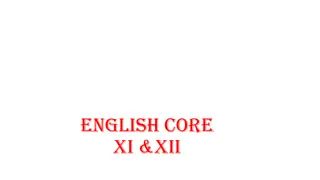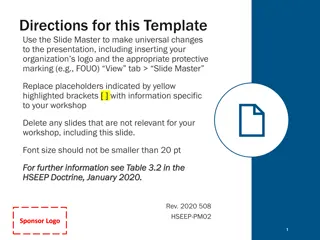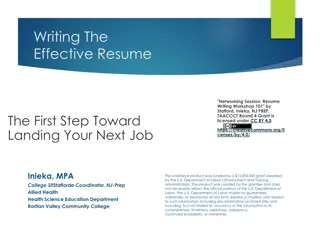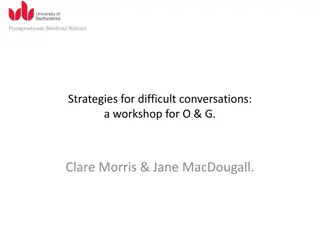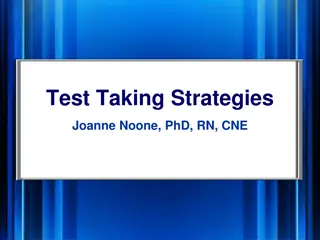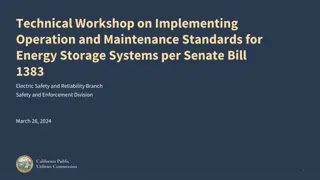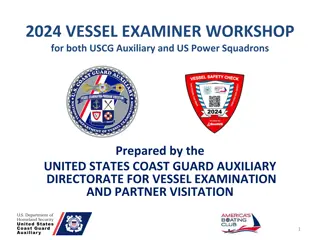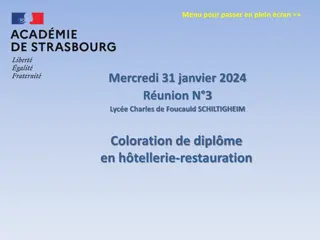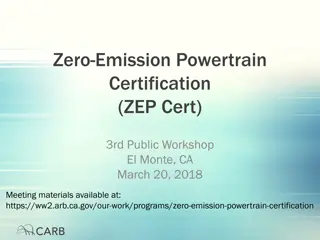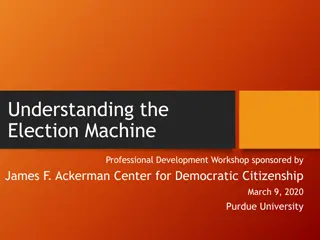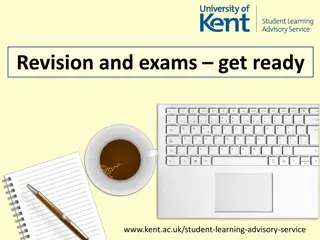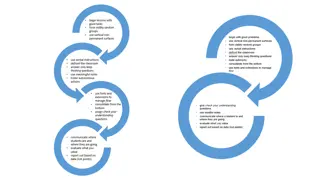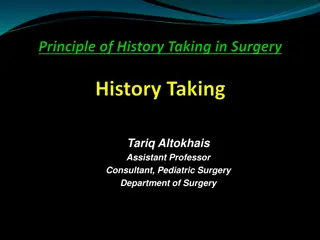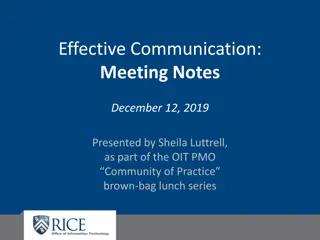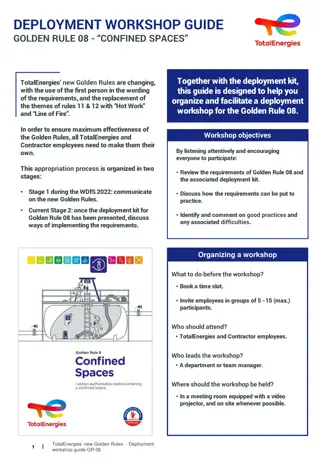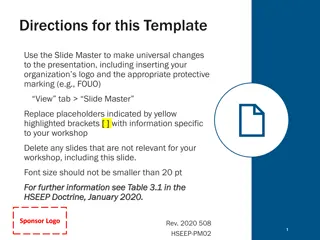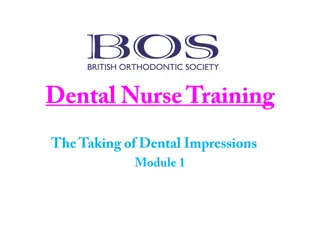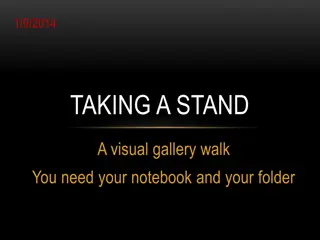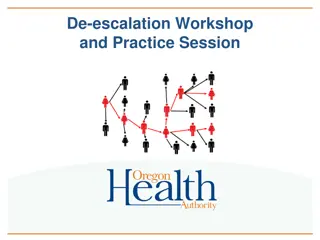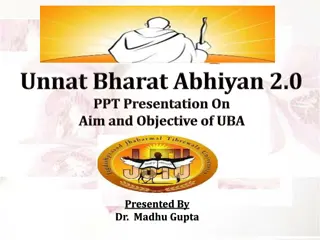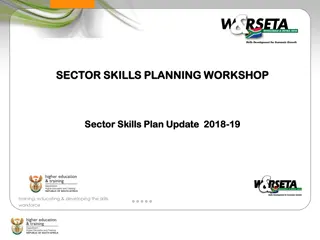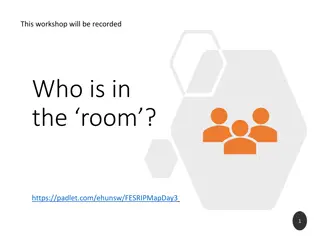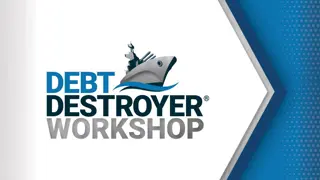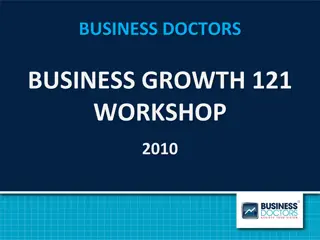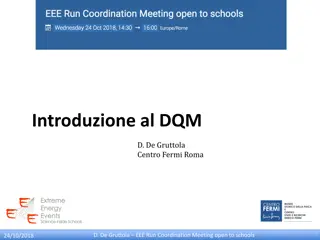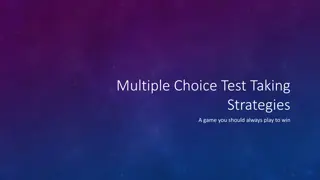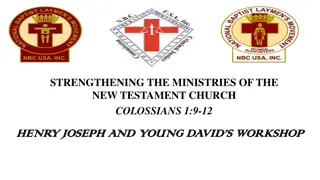Effective Note-Taking Strategies Workshop
Learn how to take effective notes from textbooks to organize and retain information efficiently. The workshop covers techniques like active reading, effective highlighting, and creating margin notes. By following these strategies, you can improve your study habits and enhance your learning process.
Download Presentation

Please find below an Image/Link to download the presentation.
The content on the website is provided AS IS for your information and personal use only. It may not be sold, licensed, or shared on other websites without obtaining consent from the author. Download presentation by click this link. If you encounter any issues during the download, it is possible that the publisher has removed the file from their server.
E N D
Presentation Transcript
Taking Effective Notes From Textbooks Brown Bag Workshop II
Taking notes from textbooks is a way to organize and remember what you read
Evaluation To each question, circle Y for yes, S for sometimes, and N for Never. 1. The notes I take from my reading are easy to study and learn from? Y S N 2. When reading material that I need to learn or refer to later, I usually take some form of notes. Y S N 3. I know how to study without a lot of re-reading. Y S N 4. I take notes from reading using keywords, not full sentences. Y S N 5. I mark areas I don t understand in my text so I can ask questions about them. Y S N 6. I know how to use a highlighter effectively. Y S N 7. I know how to create margin notes. Y S N 8. I can locate the important information in reading material and take effective notes from it. Y S N 9. I use note taking as an active way to concentrate and learn when I read. Y S N 10. I learn more when I take effective notes. Y S N
Scoring Number of Y s ___ X 10 = ___ Number of S s ___ X 5 = ___ Number of N s ___ x 0 = ___ Total _____ 100-200 Poor 300-400 Fair 500-600 Average 700-800 Good 800-1000 Excellent
Just Reading versus Active Reading Reading actively is more than just reading. It involves: Pre-viewing to gain background knowledge Reading in key words to read faster and concentrate more Reading in phrases to read faster and concentrate more Reading with a pacer to read faster and concentrate more Adjusting your reading speed to reduce wasted time
Effective Highlighting Helps you become more engaged because you are focusing on locating important information Leaves less time and energy for mind wandering
Active vs. Passive Readers Passive learners: Highlight too much waste time highlighting entire pages and have to re-read every thing when it comes time to study Active learners: Highlight less and try to understand more
Creating Margin Notes Margin notes either summary in the margin, question in the margin or personal comments *You are locating important info. and then condensing it down to key words, a heading, question, or other summary *When reviewing you will spend most of your time reviewing from your margin notes
3.1 Matter AIM: To learn about matter and its three states. Matter, the stuff of which the universe is composed, has two characteristics: it has mass and it occupies space. Matter comes in a great variety of forms: the stars, the air that you are breathing, the gasoline that you put in your car, the chair on which you are sitting, the turkey in the sandwich you may have had for lunch, the tissues in your brain that enables you to read and comprehend this sentence, and so on. To try to understand the nature of matter, we classify it in various ways. For example, wood, bone, and steel share certain characteristics. These things are all rigid; they have definite shapes that are difficult to change. On the other hand, water and gasoline, for example, take the shape of any container into which there are poured. (see Figure 3.1). Even so, 1 L of water has a volume of 1 L whether it is in a pail or a beaker. In contrast, air takes the shape of its container and fills any container uniformly. The substances we have just described illustrate the three states of matter: solid, liquid, and gas. These are defined and illustrated in Table 3.1. The state of a given sample of matter depends on the strength of the forces among the particles contained in the matter; the stronger these forces, the more rigid the matter. We will discuss this in more detail in the next section. Introduction to Chemistry A Foundation Zumdahl P 55
3.1 Matter AIM: To learn about matter and its three states. Matter, the stuff of which the universe is composed, has two characteristics: it has mass and it occupies space. Matter comes in a great variety of forms: the stars, the air that you are breathing, the gasoline that you put in your car, the chair on which you are sitting, the turkey in the sandwich you may have had for lunch, the tissues in your brain that enables you to read and comprehend this sentence, and so on. To try to understand the nature of matter, we classify it in various ways. For example, wood, bone, and steel share certain characteristics. These things are all rigid; they have definite shapes that are difficult to change. On the other hand, water and gasoline, for example, take the shape of any container into which there are poured. (see Figure 3.1). Even so, 1 L of water has a volume of 1 L whether it is in a pail or a beaker. In contrast, air takes the shape of its container and fills any container uniformly. The substances we have just described illustrate the three states of matter: solid, liquid, and gas. These are defined and illustrated in Table 3.1. The state of a given sample of matter depends on the strength of the forces among the particles contained in the matter; the stronger these forces, the more rigid the matter. We will discuss this in more detail in the next section. What are three Types of Matter? Introduction to Chemistry A Foundation Zumdahl P 55
Highlighting/Margin Notes Assignment Name: ___________________ Use highlighting AND margin notes to mark the following reading selections. Conflict We encounter conflict when we must choose between two or more alternatives. There are three basic types of conflict: approach-approach, avoidance-avoidance, and approach-avoidance. The approach-approach conflict is the need to choose between two attractive alternatives. The need to choose between vacationing in England or Frances is an example of approach-approach conflict. This type of conflict is resolved when one possibility becomes more attractive than the other. If a vacation in England will include visits with friends and the trip to France will not, then England may become the more attractive choice. The avoidance-avoidance conflict exists when you must choose between two unattractive alternatives. An example is the need to decide whether you will have a tooth pulled or have root canal work done on it. This type of conflict is resolved when one possibility becomes more unattractive than the other. If having a tooth pulled becomes more unattractive, you may choose to have root canal work done on the tooth.
